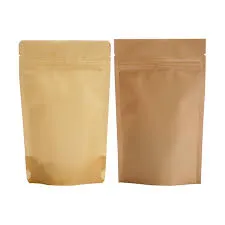- Afrikaans
- Albanian
- Amharic
- Arabic
- Armenian
- Azerbaijani
- Basque
- Belarusian
- Bengali
- Bosnian
- Bulgarian
- Catalan
- Cebuano
- chinese_simplified
- chinese_traditional
- Corsican
- Croatian
- Czech
- Danish
- Dutch
- English
- Esperanto
- Estonian
- Finnish
- French
- Frisian
- Galician
- Georgian
- German
- Greek
- Gujarati
- haitian_creole
- hausa
- hawaiian
- Hebrew
- Hindi
- Miao
- Hungarian
- Icelandic
- igbo
- Indonesian
- irish
- Italian
- Japanese
- Javanese
- Kannada
- kazakh
- Khmer
- Rwandese
- Korean
- Kurdish
- Kyrgyz
- Lao
- Latin
- Latvian
- Lithuanian
- Luxembourgish
- Macedonian
- Malgashi
- Malay
- Malayalam
- Maltese
- Maori
- Marathi
- Mongolian
- Myanmar
- Nepali
- Norwegian
- Norwegian
- Occitan
- Pashto
- Persian
- Polish
- Portuguese
- Punjabi
- Romanian
- Russian
- Samoan
- scottish-gaelic
- Serbian
- Sesotho
- Shona
- Sindhi
- Sinhala
- Slovak
- Slovenian
- Somali
- Spanish
- Sundanese
- Swahili
- Swedish
- Tagalog
- Tajik
- Tamil
- Tatar
- Telugu
- Thai
- Turkish
- Turkmen
- Ukrainian
- Urdu
- Uighur
- Uzbek
- Vietnamese
- Welsh
- Bantu
- Yiddish
- Yoruba
- Zulu
Exploring the Benefits of Food Vacuum Chamber Use for Preservation and Storage.
The Importance of Food Vacuum Chambers in Preservation and Safety
In the modern culinary world, where food freshness and safety take precedence, food vacuum chambers have emerged as indispensable tools for both home cooks and commercial kitchens. These devices play a crucial role in extending the shelf life of various food products, enhancing flavors, and preserving nutritional value without the use of preservatives or chemicals. In this article, we will explore the mechanics of food vacuum chambers, their benefits, and their applications.
At its core, a food vacuum chamber operates on a simple principle removing air from a sealed environment. Air contains moisture and oxygen, both of which contribute to the oxidation and spoilage of food. When food is stored in a vacuum-sealed environment, the absence of air slows down the processes of bacteria growth and mold formation, which are responsible for food spoilage. The vacuum chamber works by placing the food item into a chamber and then using a pump to evacuate air until a pre-set pressure is reached, after which the chamber is sealed.
One of the primary benefits of using a vacuum chamber is the significant extension of shelf life for food products. For example, vacuum-sealed meats can last up to five times longer in the refrigerator compared to traditional storage methods. By preventing spoilage and freezer burn, vacuum chambers help reduce food waste significantly, which is not only beneficial for consumers but also for the environment. In the United States alone, millions of tons of food are wasted every year. Efficient food preservation techniques like vacuum sealing can contribute to a reduction in this alarming statistic.
Another significant advantage of vacuum chambers is their ability to lock in flavors and maintain the food’s original texture. The vacuum sealing process minimizes the exposure to air, thereby preventing the loss of volatile compounds that contribute to taste and aroma. This is especially important for herbs and delicate ingredients. Chefs and home cooks alike utilize vacuum chambers to marinate food more efficiently, allowing marinades to penetrate deeper and infuse flavors at a much faster rate.
food vacuum chamber

Nutritional preservation is another vital aspect of using vacuum chambers. The absence of oxygen not only helps in combating spoilage but also reduces the degradation of vitamins and minerals in food. Studies have shown that vacuum-sealed vegetables retain more of their nutritional content compared to those stored traditionally. This makes vacuum chambers particularly popular among health-conscious individuals who prioritize preserving the nutritional integrity of their meals.
The applications of food vacuum chambers extend beyond mere storage and preservation. They are widely used in sous vide cooking, an innovative technique that involves cooking food in a vacuum-sealed bag submerged in temperature-controlled water. This method ensures even cooking throughout while preserving moisture and flavors, resulting in tender and delicious dishes. Many professional chefs and home cooking enthusiasts are adopting this technique, elevating their culinary experiences in ways that were previously unattainable.
In industrial settings, vacuum chambers are indispensable for packaging food products. This technology is commonly used in the meat, seafood, and cheese industries, ensuring that products remain fresh for extended periods. Vacuum packaging not only extends shelf life but also enhances product presentation, as it often results in a professional and appealing appearance.
Despite the numerous advantages of food vacuum chambers, it is essential to use them correctly to ensure food safety. Improper sealing, inadequate temperature control, or storage of potentially hazardous foods can lead to bacterial growth and spoilage, posing health risks. It is crucial for users to follow safety guidelines, such as ensuring that food is fresh, properly cooled before sealing, and consumed within recommended timeframes.
In conclusion, food vacuum chambers represent a significant advancement in food preservation technology, offering numerous benefits ranging from extended shelf life to enhanced flavor and nutritional preservation. Whether for personal use in a home kitchen or in commercial food processing, these devices have proven to be invaluable in combatting food spoilage and waste. As our understanding of food science continues to evolve, the role of vacuum chambers in safe and effective food preservation will likely become even more prominent, ultimately contributing to a more sustainable and delicious future.













